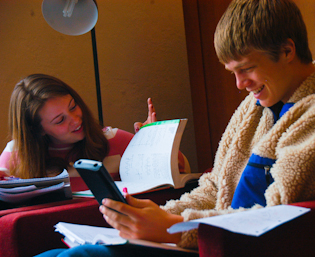For many AP classes, the final weeks of the year following AP exams present unique opportunities to engage in additional hands on learning experiences.

While Phil Goodnow's AP Human Geography class has spent the last two weeks assimilating the best writing assignments from the Social Science classes this year into an e-publication that will be available on our website shortly, Chris Rogers' AP Statistics students have used the knowledge gained this year to craft unbiased surveys investigating the effectiveness of Friday night study halls and the most common distractions in dormitories during evening study hall.

Both of these topics under review by statistics students are of keen interest to the greater community as faculty prepare for end of year meetings running from June 4th-7th. Throughout each year, students consistently play a role in shaping Proctor's culture through their involvement in student government and through their consistent dialogue with faculty. Their feedback is incredibly valuable as we continually try to improve students' educational experience through the tweaking of rules, guidelines, and programs.

One of the challenges involved in utilizing student voices lies in the bias present in feedback received. Understanding bias (we all bring some bias to conversations we have about this school) is one of the key concepts taught in AP Statistics. In order to analyze any form of data, you must first understand its origins.

As AP Statistics students worked to prepare their surveys for this final project discussed above, repeated revisions had to take place in order to minimize bias in the way they asked questions. The random student sample to whom they administered their survey was another measure taken to reduce bias. Finally, as students organized their data and prepared to present for their final exam during D block on Tuesday they sought to present their findings with minimized bias. The end result will be useful, unbiased data that can be used to help inform the community as decisions are made about how to best serve student learning.

The lessons these AP Statistic students have learned are lessons we must all remain mindful of as we process the valuable feedback shared with us throughout the course of the year. We must take information, strip it of bias and present it to the community in an objective manner that both celebrates strengths and acknowledges weaknesses. Through this process we will continue to improve as a school, just as we expect our students to do the same.















